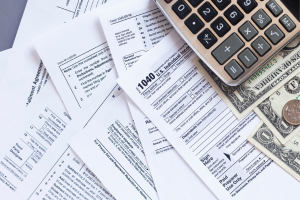TSP Withdrawal Penalty
The Thrift Savings Plan (TSP) is one of federal employees’ most valuable retirement benefits. However, withdrawing funds from your TSP before retirement can result in penalties that significantly reduce your savings. Understanding TSP withdrawal rules, including penalty exceptions and tax implications, is essential to maximize your retirement savings.
We will cover everything you need to know about TSP withdrawal penalties, helping you avoid costly mistakes and maximize your retirement funds.
What is the TSP Withdrawal Penalty?
When federal employees or retirees withdraw funds from their TSP before reaching a certain age, they may face a 10% early withdrawal penalty imposed by the IRS. This penalty is designed to discourage premature access to retirement savings. Additionally, TSP withdrawals are subject to federal income taxes, reducing the amount you receive.
The 10% penalty applies to most withdrawals made before age 59 ½, but essential exceptions and strategies exist to help minimize or avoid this penalty.
At What Age Can You Withdraw from TSP Without a Penalty?
The critical age for penalty-free withdrawals from your TSP is 59 ½. After this age, you can withdraw from your TSP without incurring the 10% early withdrawal penalty. However, you are still responsible for paying federal income taxes on the withdrawn amount unless you roll the funds into another qualified retirement account, such as an IRA.
There is also a critical exception for those who retire or have separated from federal service. If you separate from federal service in the year you turn 55 or later, you can withdraw funds from your TSP penalty-free. This can be a significant benefit for federal employees considering early retirement.
Key Exceptions to the TSP Withdrawal Penalty
Several exceptions allow federal employees to access their TSP funds without paying the 10% penalty:
- Separation from Service at Age 55 or Later: Federal employees who separate from service in the year they turn 55 or later can avoid the penalty on early withdrawals.
- Permanent Disability: If you become permanently disabled, you can withdraw from your TSP without the early withdrawal penalty, regardless of age. Documentation of the disability is required.
- Medical Expenses: If your unreimbursed medical expenses exceed 7.5% of your adjusted gross income, you can withdraw penalty-free to cover those expenses.
- Life Annuity: Withdrawals taken as part of a life annuity plan are exempt from the penalty.
- TSP Hardship Withdrawal: Hardship withdrawals, while available, are subject to the penalty unless you qualify for an exception.
TSP Withdrawal Penalty After Age 59 ½
Rolling over your TSP into a traditional IRA can help you defer taxes and retain more control over your savings.
After 59 ½, you can withdraw from your TSP without facing the 10% early withdrawal penalty. However, all withdrawals are subject to federal income taxes. Federal employees should plan their withdrawals carefully to avoid higher tax brackets or unnecessary tax burdens.
The SECURE 2.0 Act: A Game Changer for Public Safety Employees
The SECURE 2.0 Act, enacted in 2024, provides a significant benefit for federal employees in special categories, such as law enforcement officers, firefighters, and other public safety workers. Under this law, public safety employees with at least 25 years of service can now make penalty-free withdrawals from their Traditional TSP accounts at any age upon retirement. This marks an important expansion of the original “Age 50 Rule,” which previously allowed only those who retired at age 50 or later to avoid the 10% early withdrawal penalty. Now, as long as they meet the service requirement, public safety employees can access their retirement savings early without penalty, offering greater financial flexibility and security during their post-service years.
How to Avoid TSP Withdrawal Penalties
Avoiding penalties on TSP withdrawals requires thoughtful planning. Here are some key strategies:
- Utilize the Age 55 Rule: If you separate from federal service in the year you turn 55 or later, you can withdraw funds penalty-free.
- Wait Until Age 59 ½: Delaying withdrawals until age 59 ½ ensures you can avoid the 10% penalty.
- Consider a Rollover: Rolling over your TSP into a traditional IRA can help you defer taxes and avoid penalties.
- Explore Penalty Exceptions: You can qualify for an exception, such as medical expenses or disability, to avoid the penalty.
- Installment Payments: Taking installment payments can spread out your tax liability and avoid penalties.
Tax Implications of TSP Withdrawals
All TSP withdrawals are subject to federal income taxes. The amount you withdraw is added to your taxable income for the year, potentially increasing your tax bracket. Federal employees should carefully consider the timing and amount of their TSP withdrawals to minimize tax impacts.
TSP Early Withdrawal Penalty and Hardship Withdrawals
TSP hardship withdrawals are available for those facing financial difficulties. However, these withdrawals typically come with a 10% penalty and income tax liability unless you qualify for an exception.
Hardship withdrawals should only be used as a last resort due to their significant financial implications.
Penalty-Free Withdrawal Options After Age 59 ½
Once you turn 59 ½, you have several options for penalty-free withdrawals:
- Lump-Sum Withdrawals: Withdraw your entire TSP balance in one lump sum, though this may result in a higher tax liability.
- Installment Payments: You can opt for monthly, quarterly, or annual installment payments to spread out withdrawals and manage taxes effectively.
- Life Annuity: Choosing a life annuity allows you to receive steady payments for life, avoid the penalty, and manage taxes over time.
- Rollover to IRA: Rolling over your TSP to an IRA provides flexibility and helps defer taxes on your retirement savings.
TSP Withdrawal Penalty at Age 55: The Federal Employee Exception
The age 55 exception is a valuable benefit for federal employees. If you separate from service in the year you turn 55 or later, you can withdraw funds from your TSP without incurring the 10% early withdrawal penalty.
This exception applies to federal employees, postal workers, and members of the uniformed services. It provides flexibility for those who want to retire early but need access to their TSP savings.
Maximizing Your TSP and Avoiding Penalties
Understanding TSP withdrawal rules and exceptions is crucial for maximizing retirement savings. By carefully planning your withdrawals and avoiding penalties, you can ensure that your hard-earned savings are available when you need them most.
If you need help with the best withdrawal strategy for your situation, it’s recommended to consult with a TSP withdrawal advisor. Advisors on this site can help you navigate TSP withdrawal rules and create a strategy tailored to your retirement goals.
Search for Public Sector Retirement Expert.
Receive the Best advice.
PSR Experts can help you determine if Public Sector Retirement is right for you or if you should look for alternatives.
The Best Advice creates
the best results.
Search for Public Sector Retirement Expert.
Receive the Best advice.
PSR Experts can help you determine if Public Sector Retirement is right for you or if you should look for alternatives.
The Best Advice creates
the best results.
Free Download E-Book
Recent Articles

Federal Retirement Advice You Didn’t Know You Needed—Until Now
Key Takeaways: Retirement planning doesn’t stop the day you

The Latest Federal Employee News You Need to Know to Protect Your Retirement
Key Takeaways: Keeping up with federal employee benefit changes

Ready for Retirement? Here’s How Law Enforcement Officers Can Leave the Job with Benefits Intact
Key Takeaways Early retirement options are available to law

FAA, Law Enforcement, and Special Federal Employee Categories—Here’s What Makes Their Retirement Unique
Key Takeaways: Certain public-sector roles, like those in the






